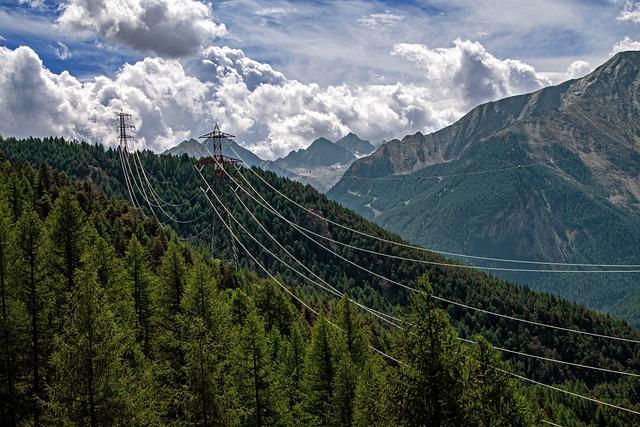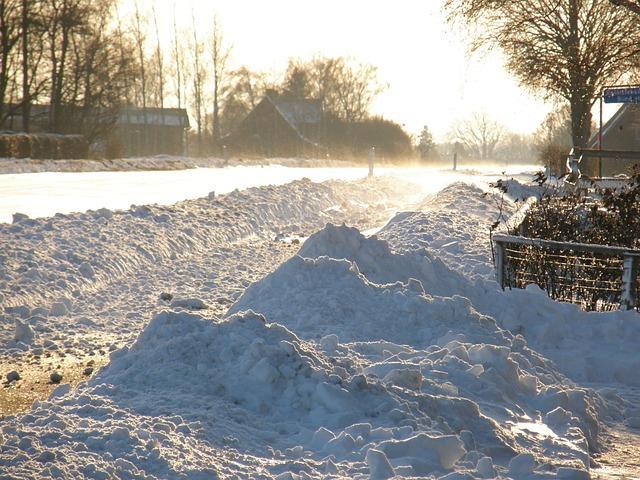After a storm hits, dealing with the aftermath of fallen trees can be a daunting task for homeowners. In situations like these, knowing what steps to take can make a significant difference in the recovery process. Emergency tree removal services play a crucial role in restoring safety and aesthetics to your property post-storm damage. This article will outline key considerations and actions to take when faced with the need for emergency tree removal after a storm. Whether it’s assessing dangers, understanding signs that indicate immediate removal is necessary, or hiring the right professionals, being prepared is essential for a smooth recovery [1].
Table of Contents
- Assessing the Damage to Your Trees
- Calling a Professional Tree Removal Service
- Dealing with Fallen Trees Safely
- Understanding Insurance Coverage for Tree Removal
- Preparing for Future Storms and Tree Hazards
- Q&A
- Conclusion
Assessing the Damage to Your Trees
After a storm has passed, it is crucial to assess the damage to your trees to ensure safety and prevent further harm to property or individuals. Start by carefully inspecting each tree on your property for signs of damage, such as broken branches, uprooting, or leaning. Look for any immediate risks, such as fallen limbs or compromised structures, and address them promptly [1].
Once you have identified damaged trees, assess the extent of the destruction and whether they pose a threat to surrounding areas. Trees that have suffered irreparable damage or are at risk of falling should be prioritized for removal to prevent accidents or further property damage. Consult with professionals if needed to safely remove trees that are beyond repair [2].
Remember that standing dead trees can also present significant hazards, and their removal should be considered to mitigate risks. If you have concerns about the safety of trees on your property, seek guidance from experts and report any hazardous conditions promptly to ensure a timely and proper response [3].
Calling a Professional Tree Removal Service
When a storm hits and leaves a trail of havoc in your yard with fallen trees or branches, it’s crucial to act promptly and responsibly. Your safety and property protection are of utmost importance in these situations. post-storm can help mitigate risks and restore your surroundings to a safe state.
Here’s what you need to do after a storm for emergency tree removal:
- Assess the Damage: Before contacting a professional tree removal service, carefully inspect the area to identify any trees or branches that pose an immediate danger.
- Call an Emergency Tree Service: Reach out to reputable emergency tree service providers like Kinnucan Tree Experts[1] or AJ’s Tree Service[2] for urgent assistance. They have the expertise and equipment to safely remove fallen trees or branches.
- Stay Safe: Until the professionals arrive, keep a safe distance from the damaged trees or branches to avoid any potential hazards.
| Service Provider | Offerings |
|---|---|
| Kinnucan Tree Experts[1] | Emergency tree service for storm-damaged trees or branches. |
| AJ’s Tree Service[2] | Well-equipped team for immediate tree removal with precision and safety. |
Dealing with Fallen Trees Safely
After a storm wreaks havoc on your property, dealing with fallen trees requires caution and a strategic approach. The first step is to carefully assess the situation to ensure safety
- Survey the Damage: Walk around your property to identify any fallen trees or branches that may pose a risk. Take note of any power lines that may be affected.
- Call in the Experts: If the tree damage is extensive or poses a danger, contact professional tree removal services for assistance in safely removing the fallen debris.
- Prune with Care: For smaller branches, you can prune following proper guidelines to aid in the tree’s recovery. Make clean cuts in the right places as shown in figure 11 in the [2] resource.
Remember that safety should always be the top priority when dealing with storm-damaged trees. Avoid taking risks and seek professional help when needed to ensure a safe and effective tree removal process.
Understanding Insurance Coverage for Tree Removal
After a storm wreaks havoc on your property, dealing with fallen trees can be a daunting task. Understanding your insurance coverage for tree removal is crucial in such situations. While home insurance typically does not cover tree removal as part of regular property maintenance, it does offer protection if a tree falls on your house. Homeowners insurance can help cover the costs of repairing damage to your home caused by fallen trees, branches, or limbs, providing much-needed financial relief in the aftermath of a storm [2].
In cases where the fallen trees were damaged by wind, hail, snow, or ice, your standard HO-3 policy may include coverage for tree removal costs. This protection extends to trees felled due to the force of nature, ensuring that you won’t have to bear the expense of clearing debris left behind by a storm [3]. To navigate the process effectively, it’s essential to document the damage, notify your insurance provider promptly, and seek professional assistance for safe and efficient tree removal.
Preparing for Future Storms and Tree Hazards
After a storm has passed, the aftermath can leave a trail of damaged trees that pose safety risks and hazards. In such situations, emergency tree removal becomes crucial to ensure the safety of individuals and property. Remember, it’s essential to act promptly and responsibly when dealing with storm-damaged trees to prevent any further damage or accidents.
To start, assess the trees on your property for any visible damage and signs of instability. Look out for leaning trees, cracked branches, or uprooted roots that may indicate a potential risk. Secure the area around the affected trees and keep a safe distance to avoid any potential dangers. It’s advisable to seek professional help for assessing the severity of the damage and determining the best course of action for tree removal and restoration [2].
In cases where emergency tree removal is necessary, it’s crucial to hire experienced professionals who have the equipment and expertise to handle the situation safely and efficiently. Proper tree removal techniques should be employed to minimize further damage and ensure the restoration of the affected area. Remember, safety should always be the top priority when dealing with storm-damaged trees, so never hesitate to seek professional assistance when needed.
Q&A
Q: What should I do if a tree falls on my property during a storm?
A: If a tree falls on your property during a storm, the first step is to ensure everyone is safe and secure. Once it is safe to do so, contact a professional tree service for emergency tree removal. They can assess the damage, remove the fallen tree, and address any potential hazards. You can reach out to companies like Alpine Tree Service[1], McCabe’s Tree Service[3], or report the incident to NYC Parks[2] for assistance.
Q: How can I report a downed or damaged tree after a storm?
A: To report a downed or damaged tree after a storm, you can submit a service request through NYC Parks[2] by visiting 3-1-1 online. For emergency tree removal services in New Jersey, you can contact McCabe’s Tree Experts at 908-482-7772[3]. Additionally, if the situation is life-threatening, it is important to call 911 immediately for assistance.
Q: Who should I contact for storm damage cleanup and emergency tree service?
A: For storm damage cleanup and emergency tree service, you can contact Alpine Tree Service[1] for 24/7 emergency tree removal and debris cleanup. McCabe’s Tree Service[3] also offers emergency storm cleanup services in New Jersey. Additionally, NYC Parks[2] provides assistance for reporting downed or damaged trees in the city.
Conclusion
In conclusion, understanding the steps to take after a storm can help you efficiently handle emergency tree removal. Remember, safety should always come first, so if you are unsure about the condition of the tree or the extent of the damage, it is best to seek assistance from professionals like those at American Climbers [2] or Daniel’s Lawn Service [3]. By following proper protocols and seeking expert help where needed, you can ensure a swift and safe cleanup process for any storm-damaged trees on your property.
Simpsons Tree Services, Servicing Melbourne’s North Eastern Suburbs
Book a quote online at www.simpsonstrees.com.au



